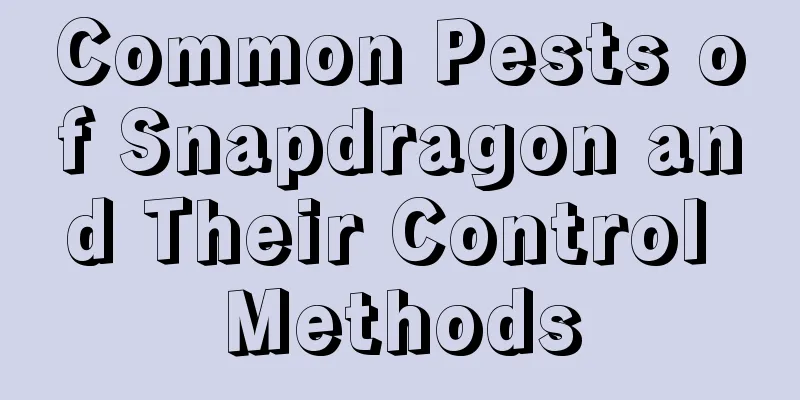Common Pests of Snapdragon and Their Control Methods

Common Pests of Snapdragon: AphidsPest symptomsThey usually concentrate on sucking sap from tender buds, leaves and branches, causing the affected parts of the plant to shrink and deform. Aphids also secrete honeydew that contaminates the plants and induces diseases such as sooty mold. Prevention and treatment methodsYou can use 600-800 times diluted Wanling or 800-1000 times diluted 25% fish vine oil Suposha for spraying. Suposha is a broad-spectrum organophosphorus insecticide with contact and stomach poison effects and strong penetration. It can penetrate into plant tissues and has a good control effect on chewing and piercing-sucking mouthparts pests. Spray once a week for 2-3 times in a row. Common Pests of Snapdragon: Red SpiderPest symptomsWhen snapdragons are harmed by red spider mites, their leaves fade and their chlorophyll is destroyed. Dense small yellow spots and yellow spots appear on the surface, and they gradually shrink, turn yellow, and wither. In severe cases, they fall off and lose their ornamental value. Prevention and treatment methodsRed spider mites often hide on the back of branches, leaves or in densely foliaged areas. They can be concealed by nets and easily captured manually. If chemical agents are used for treatment, you can use 20% trichloronate emulsion, add 800-1000 times water, make a solution for spraying. This drug has a good killing effect on adults, nymphs and eggs. You can also add 1000-1500 times the amount of DDT emulsion into water to make a solution for spraying. Common Pests of Snapdragon: WhitefliesPest symptomsWhiteflies suck plant sap, which can cause leaves to fade, curl, and shrink. They also often become vectors of various toxins and cause other diseases. Prevention and treatment methodsIt can be killed by spraying with 0.01% solution of dimethoate. Common Pests of Snapdragon: ThripsPest symptomsThe adults or nymphs live on plants and feed on young shoots, tender leaves, flowers and young fruits. The young leaves curl up after being eaten, and the buds and flowers wilt after being damaged. Prevention and treatment methodsIn the early stage of the disease, you can spray 25% derris or 40% dimethoate at 400-500 times dilution. |
<<: Hollyhock Pests and Control Methods
>>: Common pests of King Protea and their control methods
Recommend
How to water Lithops
1. Master the correct watering method For Lithops...
The efficacy and function of Arisaema
Indications Arisaema contains saponins and mannit...
What is the best season to plant roses?
Rose is known as the queen of flowers and is a tr...
Cassava cultivation method
1. Soil Cassava has strong adaptability to soil a...
How to make bonsai of Phalaenopsis
Potting method When potted, the cultivation mediu...
How to divide and propagate the moon rabbit ears
Leaf cutting propagation of moon rabbit ears If y...
How to grow hydroponic cactus and what to pay attention to
Growth habits of hydroponic cactus Hydroponic cac...
How often should I water the fortune tree?
How often should I water the fortune tree? Plants...
Feng Shui plants that improve children's academic performance (what plants to put in children's bedrooms to improve their academic performance)
If the flowers and plants you keep at home can no...
Benefits of Gardenia
1. Expectorant and cough relieving The ingredient...
Can the rubber tree be grown hydroponically?
Nutrient solution If you want to carry out hydrop...
Is the camellia a shade or sun-loving plant?
Does Camellia prefer shade or sun? Camellia is a ...
How to grow Daphne koreana, home cultivation method
1. Potting soil It is suitable to plant domestic ...
Disease control of Syzygium wilfordii
Sooty Disease Sooty mold is a pathogen that cause...
Is the ugli orange genetically modified? What season is it in?
1. Is it genetically modified? Ugly orange is not...









